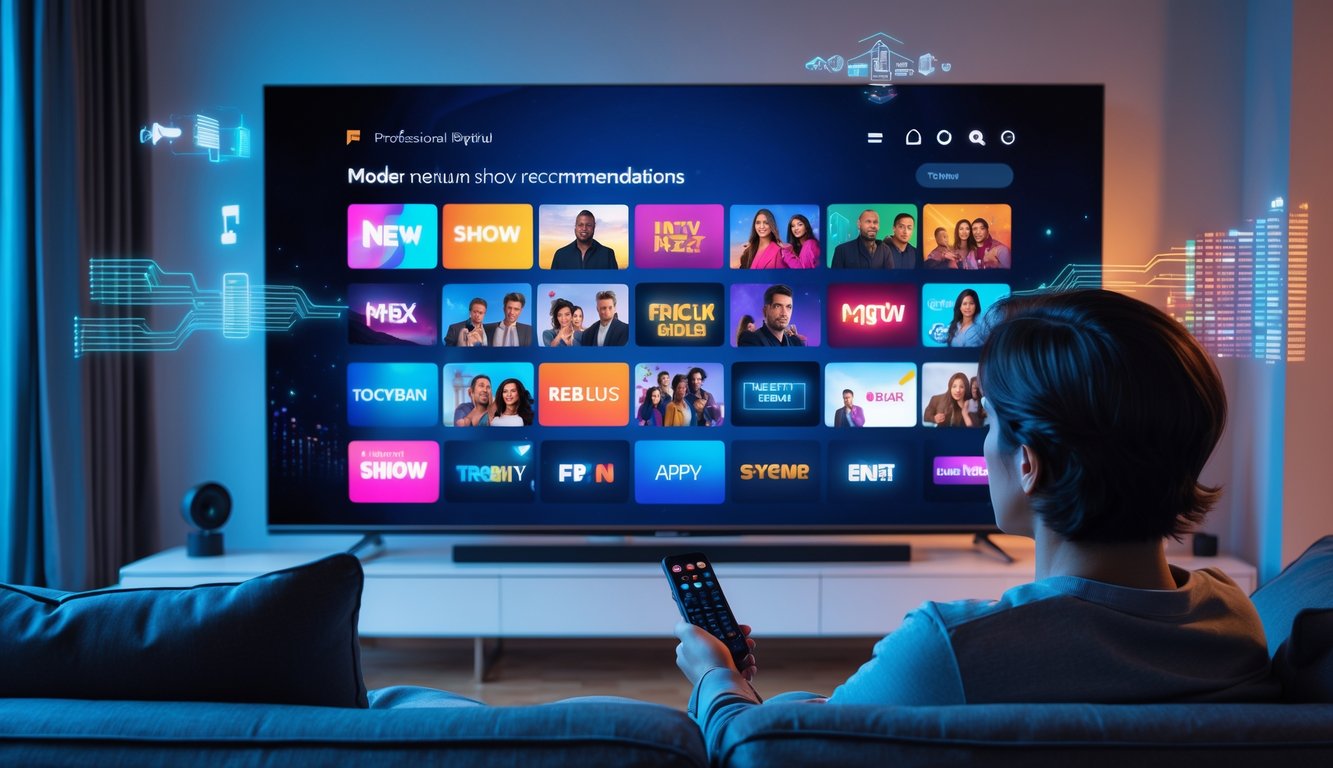
Creating a Personalized Experience
It’s not just the recs. There’s playback position, “resume watching” tiles, and those weirdly specific emails (“You missed this!”). I left for a week and came back to a homepage full of genres I’d never touched. They say it’s to help me “find what I love faster,” but it feels more like being boxed in by old habits.
Hulu, Disney+, all of them, they push “collections” based on what their AI thinks I want—never mind I only watched that action movie while folding laundry. They’re layering on machine learning, mixing dozens of attributes, but even the experts admit it’s not magic. Real talk: I let my niece watch cartoons for five minutes and got stuck in preschool hell for weeks. And kids mode wasn’t even on. If that’s intelligence, I’m a time traveler.
Curated Lists and Personalized Recommendations
Netflix, Apple TV+, Prime Video—they all brag about their curated lists. “Recommended For You,” “Trending Now,” “Because You Watched…”—they’re supposed to be different, but half the time the same stuff pops up. A media buddy told me a lot of curation is just new releases, trending tags, and sometimes even your location (so, apparently, living in Portland means my homepage is full of moody docuseries).
Here’s the kicker: last month, Netflix shoved a new series to the top for my friend, but buried it for me—even though we watch the same stuff. Maybe it’s because I skip intros or search for actors, or maybe the algorithm’s just weird. Sometimes my “You Might Like” queue is basically my roommate’s playlist, so maybe the profiles are leaking, or maybe I just don’t know myself. Anyway, these “personalized” experiences? Messy, but I still check the app just to see what random junk lands on my homepage next.
Inside Recommendation Algorithms
Every night, same story: I open a streaming app, and whatever’s at the top is almost never what I want. Some new series yelling for attention—why? The machinery behind it is just bizarre, and it’s honestly all about how I behave, not what I say I like.
Collaborative Filtering Explained
Collaborative filtering is a mess. I binge action movies, then suddenly get flooded with medical documentaries because someone else with similar habits did too. Netflix has been stacking these models since the 2009 “Netflix Prize” thing. If you’re like a certain crowd, you get what they like—even if you barely liked it yourself.
Plot doesn’t matter. It’s all about clicks, ratings, and half-finished shows (which, let’s be real, is most stuff after 10pm). Basically:
- User-based: “Everyone with your habits is watching rom-coms, so why aren’t you?”
- Item-based: “If you cried at Stranger Things, you’ll sob through BoJack Horseman, trust us.”
The more you click, the more confident the guesses, but honestly, I click stuff half-asleep, so who even knows. Deep learning? Still guessing, just with fancier code and bigger GPUs.
Content-Based Filtering Methods
Content-based filtering skips the popularity contest and just digs through tags, genres, actors, all the metadata attached to a show. Like, “You rewatched Chef’s Table? Here’s more food docs with cheese overload.” Makes sense, until you rate five heist movies on a rainy day and get stuck in ‘Bank Robbery’ land forever.
It’s all about attributes: title, director, keywords, language. They call it “personalized,” but it’s honestly just cold math. Like, every Tarantino flick gets tagged “stylized violence,” and suddenly that’s all you see.
Unless you’re building neural nets to sniff out subtle stuff, most apps just toss you whatever matches the tags. Hulu’s rec system (they basically admitted this in an interview last year, I think) even scans dialogue for key phrases. I binged a couple shows with dogs, and now every other thumbnail has a dog. I’m allergic. Go figure.
Key Data Used for Recommendations
So, I still can’t get over how every single click, pause, or random scroll ends up stitched into some massive recommendation Frankenstein, and nobody’s really talking about it. Netflix? They’ve got thousands of micro-genre tags, and honestly, I doubt half the viewers even realize. Some data engineer once just shrugged and told me, “You’re not picking shows—you’re feeding the beast.” Okay, thanks for that existential crisis. Do they even care about what’s on, or are they just staring at dashboards all day?
Viewing Habits and Watch History
Last week, I started a British crime series at midnight (why do I do this?) and bailed after like seven minutes. Two nights later, I accidentally inhaled four sitcom episodes in a row. The platforms all do something different with this mess—Hulu and Disney+? They’re obsessed with what you watched most recently, but Apple TV? It’s like they’re keeping score if you rewatch stuff, which is weirdly flattering. Seriously, watch “Deadpool” three times and suddenly you’re living in a Ryan Reynolds multiverse.
It’s not nostalgia, it’s not magic, it’s just a bunch of math—collaborative filtering, weighted averages, whatever. They even track when you watched, which is a little much. Some Netflix engineer once bragged, “We swap out 80% of the homepage every week based on fresh data.” I barely remember what I finished last Tuesday, but their graphs definitely do. Even just scrolling and not watching? That’s enough to mutate the next batch of recommendations. I can’t win.
Interaction Data and Metadata
Now, here’s the part that gets me: half the stuff shaping my homepage isn’t even what I actually watch. It’s the trailers I ditch after 11 seconds, the random stuff I click by mistake, the previews I mute because I can’t stand the music. All that, plus the invisible stuff—genre tags, actors, directors, runtime, ratings, even those negative signals—just gets dumped into the algorithm soup.
Amazon Prime once started recommending everything in Italian for a week because I tapped the wrong thing. Not kidding. Clearly, metadata confuses everyone, not just the robots. I’ve heard engineers go on about “complex plot” or “ensemble cast” like it’s some deep science, but let’s be honest, half of reality TV doesn’t even have a plot. They track how often you pause, how fast you rate things (and yes, I still rate stuff, don’t judge me), and every single one of those moves spins the wheel for what pops up next. Sometimes I wish it didn’t.



